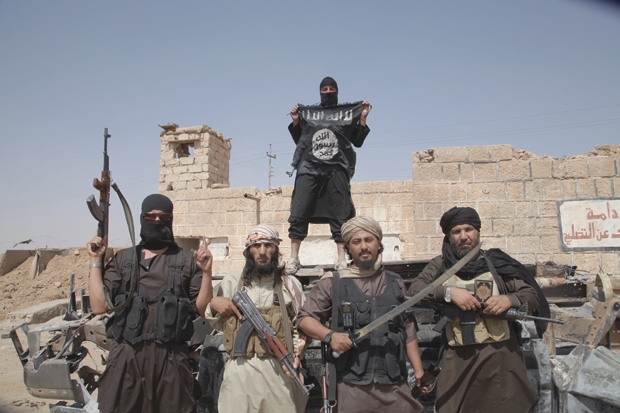War can reshape the medium of television. The First Gulf War was a landmark moment in broadcasting: CNN had reporters in Baghdad when the first bombs fell, no one else did, America was riveted and the concept of 24-hour news (accompanied by thousands of graphics) suddenly took off. And now, just as a third conflict kicks off in Iraq, we have a new television insurgent: Vice News, which is shaking up war reporting with its extraordinary coverage of the jihadis tearing up Syria and Iraq. The idea of watching television made by a magazine seems bizarre — or, at least, it did this time last month. Vice started life as a provocative publication. It was dubbed the ‘hipster’s bible’, but underneath all the snark, Vice had big plans. Funding began to drip in, and, before long, it started to flood. Last year Rupert Murdoch’s 21st Century Fox poured $70 million into Vice Media, aiming to make it a global news brand — producing television for a generation that doesn’t watch television in the traditional way.

The result is Vice News’s astonishing internet footage of life behind enemy lines. The Vice reporter Medyan Dairieh was embedded with Isis as it took control of the city of Raqqa in Syria. This unprecedented access has been broadcast online as a five-part mini-series over the past week, ten minutes each, leaving the rest of the West’s media clambering to catch up. The BBC admitted defeat, and broadcast Vice’s immersive footage on Newsnight, while the Daily Mail interviewed Dairieh. A safer option, they must have sensed, than sending one of their own reporters out to join the jihadis. With scoop after scoop, Vice is making other television reports from the Middle East and Ukraine look hackneyed. Its videos may fail every rule in the BBC impartiality book, but they are brilliantly edited and, often, utterly compelling. Vice News has found young, fearless foreign correspondents to serve a youthful audience who are bored stiff by traditional outlets but are quite prepared to watch videos on their mobile phones.

You get the sense that Dairieh’s film shows Isis in the way that they’d like to be portrayed. Crucifixions, kids brandishing Kalashnikovs, beheadings, joy-riding in tanks — the documentary veers between the terrifying and the absurd. Vice won’t say what restraints Isis imposed on them, but the experience of other journalists working in the caliphate suggests they would have been strict censors.
The Vice videos pump out Isis’s threatening messages. A jihadi is filmed saying that, if Turkey continues to hold water in the Euphrates river via the Atatürk Dam, Isis will ‘liberate Turkey’. Later, a Belgian jihadi prompts his son to shout that he wants to ‘kill infidels’. Abu Mosa, the Islamic State’s head of press, has a starring role. Balanced reporting this ain’t.

Still, Vice has gone where no other media company has managed: into the heart of the Islamic State. As a result, the two organisations have formed a bizarre symbiotic relationship. Both are youth-focused, both have global ambitions and both have a pioneering spirit. Even their black-and-white branding is similar. It is a delicious irony, though, that Isis should choose Murdoch-funded Vice News as its principal media partner. Vice’s oeuvre includes ‘The Vice Guide To Sex’ and a guide to the ‘all-alcohol diet’. Hardly Sharia-friendly stuff. Perhaps western news outlets all look the same from the dusty plains of the caliphate. Or maybe Isis aren’t nearly as clued up as we think they are. Either way, Vice News has produced the most compelling coverage of this new war so far.







Comments